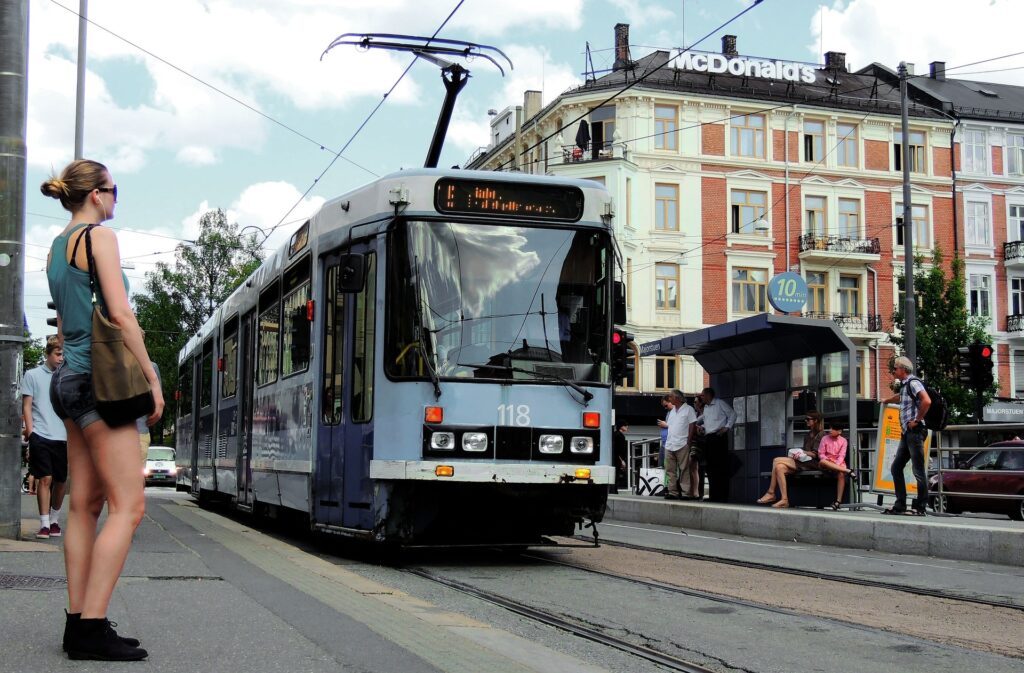There was an interesting survey that popped up on our LinkedIn feed. The question was, “How best can we ensure we optimize our cities to work for humans and not cars?” The choices were:
- Adding better/more bike lanes.
- Less on-street parking.
- Fewer freeways in big cities.
- More reliable public transport.
Number 4 had over 60% of the votes.
We recently also ran a poll on LinkedIn asking people why they don’t commute by public transport, and it was equally split between lack of convenience and no access to public transit.
Whilst neither of these surveys produces valid data due to the number of respondents and the self-selecting nature of a LinkedIn poll, they give an idea of how people think.
Interestingly, two Scandinavian capital cities, Helsinki and Oslo, have introduced successful measures to reduce car usage and increase riders on public transit, which did not concentrate on public transit alone.

Helsinki in Finland honed in on the walking environment and found that a 5% improvement in this could led an €8.5m increase in fares. Work on improving pedestrian and cycling infrastructure leads to more people using public transit instead of private cars.
Generally, a one kilometre (0.62 mile) radius is the optimum for people to walk to a transit station or stop. By prioritizing pedestrian routes around transport hubs, more people will use them. The main pain points for walking are the weather (which is out of our hands), distance, travel times and safety. Unsurprisingly, women were more concerned about safety and men about the speed of the journey. An underpass will cut the time of the journey but would make it feel unsafe for women. There has to be a balance struck. An improved walking environment would mean better pavements, better lighting, pleasant facades, benches and attractive planting (an excellent opportunity to help the local bee and butterfly community with wildflowers).
There are other examples outside Finland to illustrate this. Toronto Transit Commission found that 11% of their users cycled to public transport, but 60% would consider it if the infrastructure was better. Cycling has a more significant optimum distance of 3km (1.86 mile) for people to see it as a viable transport option. But it is about more than just prioritizing cycling infrastructure but also investment in cycle parking. Safe bike parking close to a station will increase users. When secure bike parking was introduced at stations in Liverpool, UK, new transit riders started using it. 19% of secure bike parking users in Liverpool are new train users. In terms of investment, cycle parking is cheaper than car parking. The area of one parking space would accommodate ten regular bikes.

Car-free liveability programme, Oslo
In 2017, Oslo, the Norwegian capital city, launched an ‘Action Plan for increased city life’; part of this was a car-free liveability programme. There was a broad consultation with different stakeholder groups on approaching this. Despite this, there was some backlash to the plans once they were underway.
First, they tackled the presence of cars in the city by removing on-street parking in the central Ring 1; there were exceptions for people with disabilities and delivery vans. Next, they altered and closed many car routes and increased the pedestrian network. They invested in cycle routes and, in major urban areas, the government covers substantial costs of large public transport projects.
The Norwegian government didn’t just invest in major urban areas and had grants that small towns and surrounding areas could access to strengthen public transit, cycling and walking infrastructure.
What was the result?
Traffic was reduced by 11% in 2016-18 and 19% in 2018-2019. The number of pedestrians and people spending time in urban spaces has increased, as has the use of public transport and cycling. Recent polls show that 50% of the city’s residents now welcome a city with fewer cars as people start to see the positive results. The initial fear of businesses that the measures would negatively impact them has not been borne out. Oslo will continue to monitor the current scheme and any new initiatives.
Time for action
It is clear from just these few examples that changes to the urban environment and infrastructure around walking and cycling coupled with car restrictions have a knock-on benefit to public transit, the environment and urban life as a whole. Other cities and urban planners are watching these initiatives closely, but it may be time for more cities, particularly in the US, to create change now.


